We all have the odd night of finding it hard to drift off, perhaps after one too many coffees or staying up to watch that last episode on Netflix. Though if this has become a persistent problem, it might be down to more than caffeine. Delayed sleep phase syndrome is a circadian rhythm-related sleep disorder. Read on to discover how this can affect your sleep, the symptoms and simple tips that could help you catch more zZZ.
What is delayed phase sleep syndrome?
Delayed Phase Sleep Syndrome, also known as Delayed Sleep Phase Disorder (DSPD), is a type of circadian rhythm sleep disorder where an individual’s sleep-wake cycle is delayed compared to the typical or desired schedule. People with DSPD have difficulty falling asleep and waking up at socially acceptable or desired times, leading to a misalignment between their internal body clock and the external environment.
Individuals with DSPD may have difficulty falling asleep until very late at night, often in the early morning hours, and struggle to wake up at the desired time in the morning. This can result in chronic sleep deprivation, excessive daytime sleepiness, and difficulties with daily functioning, such as school, work, and social activities.
What are the symptoms of delayed phase sleep disorder?
If this is something you think you could be struggling with, you are not alone. The sleep disorder affects up to 15% of teens and can follow you into adulthood if it is not resolved. Here are some of the common symptoms of DPSD:
1. Difficulty falling asleep and waking up
Due to the delay in your circadian rhythm, your brain remains alert even when you are extremely tired. This can make it hard to wake up when you want to due to excessive tiredness and your internal body clock telling you it’s now time to sleep.
2. Sleepy days
Due to the lack of sleep the night before, you may find yourself wanting to nap during the day, this can start to interfere with work and getting on with your day-to-day activities.
3. Low mood and irritability
Lack of sleep can affect us all in different ways, though low mood and irritability are common symptoms of DPSP. The frustration of not being able to drift off and wake up feeling refreshed can make you feel unmotivated and unenergised to make the most of your day.
It is always best to speak to your doctor to diagnose the sleep disorder, and the good news is this is a condition for which there are several treatments. From simple tips on improving sleep hygiene to light therapy, here are some of the ways you can start enjoying bedtime and look forward to brighter mornings.

What are the treatment options for delayed phase sleep disorder?
Bright light therapy
This is a form of light exposure that can help to reset your circadian rhythm, helping to regulate the levels of melatonin, the sleepy hormone that tells your brain it’s time to bed. A sleep doctor or your medical professional can advise on if this therapy is best for you.
Reset bedtime
Bringing bedtime forward or delaying it by an hour can also help to reset your circadian rhythm into a new routine. Try getting snuggled up an hour earlier or later than usual and experiment to see if you can find a time that works for you.
Get cool and comfortable
Keeping your bedroom and bed at a lower temperature can trigger the release of melatonin, encouraging you to fall asleep more quickly. If you find yourself overheating at night, look for bedding that helps regulate your body temperature. Our Bamboo Mattress Topper infuses a cooling gel into orthopaedic-grade memory foam (HydroFoam™) that keeps you cool through summer nights and cosy in winter. Team with our 100% Bamboo Bedding and you could be well on your way to more restorative snoozing.
Reduce light exposure before bed
Try and lower the lighting an hour or two before bed and put down your phone and laptop. Too much blue-light exposure and screen time close to bed can disrupt the release of melatonin and lead to that ‘alert’ state that makes it so hard to relax and drift off. Replacing screen time with a good book and a warm (caffeine-free) drink could work wonders for your sleep. Our medical sleep expert, Dr Seeta, advises, "Try gradually shifting your bedtime earlier by 15-minute increments and aim to get plenty of natural light in the morning. Avoid screens in the evening, create a relaxing wind-down routine, and keep a regular sleep schedule—even on weekends."
The snoozy takeaway
These are just a few of the ways that you can ease delayed phrase sleep disorder and start enjoying smoother, longer bedtimes. Looking forward to a good kip at the end of the day and starting your morning fresh and energised is essential to your health and well-being. You do not have to put up with a non-stop cycle of late nights and groggy mornings, speaking to a doctor and experimenting with treatments is the best place to start in getting bedtime back on track and enjoying the simple pleasure of a good night’s sleep.
FAQ
1. What is Delayed Phase Sleep Syndrome?
Delayed Phase Sleep Syndrome, also known as Delayed Sleep-Wake Phase Disorder (DSWPD), is a sleep disorder characterized by a significant delay in the timing of the sleep-wake cycle. Individuals with this condition typically have difficulty falling asleep at conventional bedtime and struggle to wake up at desired wake-up times.
2. What causes Delayed Phase Sleep Syndrome?
The exact cause of Delayed Phase Sleep Syndrome is not fully understood. However, it is believed to be related to a disruption in the internal body clock or circadian rhythm, which regulates the sleep-wake cycle. Factors such as genetics, hormonal changes, and environmental influences can contribute to its development.
3. What are the symptoms of Delayed Phase Sleep Syndrome?
Common symptoms include difficulty falling asleep at a desired time, prolonged sleep latency (time to fall asleep), staying awake late into the night, difficulty waking up in the morning, excessive daytime sleepiness, and a pattern of delayed sleep-wake timing on weekends or days off.
4. How is Delayed Phase Sleep Syndrome diagnosed?
Diagnosis typically involves a thorough evaluation by a healthcare professional specialising in sleep disorders. This may include a comprehensive sleep history assessment, sleep diary analysis, and possibly overnight sleep studies or actigraphy (a wrist-worn device that monitors sleep-wake patterns).
5. Are there any lifestyle changes that can help manage Delayed Phase Sleep Syndrome?
Yes, certain lifestyle modifications can assist in managing Delayed Phase Sleep Syndrome. These may include maintaining a consistent sleep schedule, exposing oneself to bright light in the morning and avoiding bright light exposure in the evening, engaging in regular exercise, and practising relaxation techniques to improve sleep quality.
Fact-checked by: Dr Seeta Shah

![[MattressTopper] Panda London Memory Foam Bamboo Mattress Topper package box](http://pandalondon.com/cdn/shop/files/Bamboo_Mattress_Topper_Package_Box.webp?v=1742301823&width=1500)
![[MattressTopper] Panda London Memory Foam Bamboo Mattress Topper on the floor](http://pandalondon.com/cdn/shop/products/Panda-Memory-Foam-Bamboo-Mattress-Topper-Yoga-e1624045454555.jpg?v=1758795458&width=1000)
![[MattressTopper] Bamboo Mattress Topper Lifestyle Image with Memory Foam Pillows Product Page](http://pandalondon.com/cdn/shop/files/Bamboo_Mattress_Topper_Lifestyle_Image_with_Memory_Foam_Pillows_Product_Page.webp?v=1758795458&width=800)
![[MattressTopper] Bamboo Mattress Topper Lifestyle Image with Bamboo Pillows In the Garden room Product Page](http://pandalondon.com/cdn/shop/files/Bamboo_Mattress_Topper_Lifestyle_Image_with_Bamboo_Pillows_In_the_Garden_room_Product_Page.webp?v=1758795458&width=800)
![[MattressTopper] Panda London Memory Foam Bamboo Mattress Topper side](http://pandalondon.com/cdn/shop/files/Mattress_Topper_Isolated_-_resized.jpg?v=1758795458&width=800)
![[HybridMattressPro] Main Image for Hybrid Bamboo Mattress Pro with all awards](http://pandalondon.com/cdn/shop/files/Hybrid_Bamboo_Mattress_Pro_Main_product_Image_with_awards.webp?v=1753971649&width=1000)
![[HybridMattressPro] Breathable Hybrid Bamboo Mattress](http://pandalondon.com/cdn/shop/products/Breathable-Hybrid-Bamboo-Mattress.jpg?v=1753971649&width=1920)
![[HybridMattressPro] Hybrid Bamboo Mattress Pro Cover Zip](http://pandalondon.com/cdn/shop/files/Hybrid_Bamboo_Mattress_Cover.jpg?v=1753971649&width=800)
![[HybridMattressPro] Panda Hybrid Bamboo Mattress Pro](http://pandalondon.com/cdn/shop/files/Hybrid_Bambo_Memory_Foam_Mattress_-_BioCell_Foam_x.jpg?v=1755095108&width=800)
![[HybridMattressPro] Couple on a Hybrid Bamboo Mattress Pro](http://pandalondon.com/cdn/shop/files/Hybrid_Bamboo_Mattress_Couple.jpg?v=1753971649&width=800)
![[CloudDuvet] Panda London The Cloud Bamboo Duvet Packaging](http://pandalondon.com/cdn/shop/products/Panda-London-The-Cloud-Bamboo-Duvet-Panda-Life-scaled_00a651ad-4ca3-4105-b520-12a94c1a4f71.jpg?v=1713363286&width=1920)
![[CloudDuvet] Panda London The Cloud Bamboo Duvet Rolled](http://pandalondon.com/cdn/shop/products/Duvet-Listing-Images03.jpg?v=1713361452&width=1000)
![[CloudDuvet] Panda London The Cloud Bamboo Duvet Girl Huggin a Duvet on the Bed](http://pandalondon.com/cdn/shop/files/Cloud_Bamboo_Duvet_-_Lady_Hugging_it_on_Bed_LifestyleImage.jpg?v=1719327585&width=1000)
![[CloudDuvet] Panda London The Cloud Bamboo Duvet Guy In the Air with Cloud Bamboo Duvet](http://pandalondon.com/cdn/shop/files/GuyonaHybridBambooMattresswithCloudDuvet.jpg?v=1743097928&width=2000)
![[CloudDuvet] Panda Cloud Duvet Winter on the bed lifestyle image](http://pandalondon.com/cdn/shop/files/Panda_Cloud_Duvet_Winter_on_the_Bed_Lifestyle-1_image.jpg?v=1747994959&width=1000)
![[BBWhite] White 100% Bamboo Bedding](http://pandalondon.com/cdn/shop/files/Pure_White_Full_Bed.webp?v=1719581797&width=1000)
![[BBWhite] White 100% Bamboo Bedding Texture](http://pandalondon.com/cdn/shop/files/100_Bamboo_Bedding_-_Pure_White_-_Close_Up_02.webp?v=1762879591&width=1000)
![[BBWhite] White 100% Bamboo Bedding Woman in bed sleeping](http://pandalondon.com/cdn/shop/files/100-Bamboo-Bedding-Set-Pure-White-BB.webp?v=1762879591&width=768)
![[BBWhite] White 100% Bamboo Bedding Woman Duvet cover buttons](http://pandalondon.com/cdn/shop/files/hand_and_buttons_1.webp?v=1762879591&width=1000)
![[BBWhite] White 100% Bamboo Bedding Woman in bed looking and smiling-](http://pandalondon.com/cdn/shop/files/SatonMadeBed-White100_BambooBedding-white_-_BB_SideShot1000x1000.webp?v=1762879591&width=980)
![[BBUrbanGrey] Urban Grey 100% Bamboo Bedding](http://pandalondon.com/cdn/shop/files/Made_Bed_-_Urban_Grey_-_Wide_Shot_2_1_1.webp?v=1762880019&width=1000)
![[BBUrbanGrey] Cloud Duvet Urban Grey 100% Bamboo Bedding Set](http://pandalondon.com/cdn/shop/files/Cloud_Duvet_-_Grey_-_Close_up_2.webp?v=1762880019&width=1000)
![[BBUrbanGrey] Urban Grey 100% Bamboo Bedding Set Woman sitting on the bed](http://pandalondon.com/cdn/shop/files/Sat_in_Bed_-_Grey_100__Bamboo_Bedding_-_Wide_Shot.webp?v=1762880019&width=1000)
![[BBUrbanGrey] Urban Grey 100% Bamboo Bedding Set Woman Duvet buttons Panda London](http://pandalondon.com/cdn/shop/files/hand_buttons_grey_bedding_1.webp?v=1762880019&width=1000)
![[BBUrbanGrey] Woman Sitting on the Bamboo Bedding with coffee](http://pandalondon.com/cdn/shop/files/SatonMadeBed-White100_BambooBedding-SideShot1000x1000.jpg?v=1762880019&width=1000)
![[BBNavyBlue] Deep Sea Navy Blue 100% Bamboo Bedding](http://pandalondon.com/cdn/shop/files/Made_Bed_-_Navy_-_Wide_Shot_3_copy.webp?v=1762879591&width=1000)
![[BBNavyBlue] Deep Sea Navy Blue 100% Bamboo Bedding Texture](http://pandalondon.com/cdn/shop/files/Cloud_Duvet_-_Navy_-_Close_up_2.webp?v=1762880019&width=1000)
![[BBNavyBlue] Deep Sea Navy Blue 100% Bamboo Bedding Woman Sitting on the bed](http://pandalondon.com/cdn/shop/files/Sat_Up_in_Bed_-_Navy_100__Bamboo_Bedding_-_Hands_on_Bed.webp?v=1762880019&width=1000)
![[BBNavyBlue] Deep Sea Navy Blue 100% Bamboo Bedding Duvet Cover Buttons](http://pandalondon.com/cdn/shop/files/Cloud_Duvet_Cover_Buttons_-_Deep_Sea_Navy.webp?v=1762880019&width=1000)
![[BBNavyBlue] Deep Sea Navy Blue 100% Bamboo Bedding Woman sitting on the bed looking away](http://pandalondon.com/cdn/shop/files/SatonMadeBed-White100_BambooBedding-SideShot1000x1000-001.webp?v=1762880019&width=980)
![[BBPink] Vintage Pink Blue 100% Bamboo Bedding](http://pandalondon.com/cdn/shop/files/Made_Bed_-_Pink_-_Wide_Shot_copy.webp?v=1762879591&width=1000)
![[BBPink] Vintage Pink Texture 100% Bamboo Bedding](http://pandalondon.com/cdn/shop/files/Cloud_Duvet_-_Pink_-_Close_up_2.webp?v=1762880019&width=1000)
![[BBPink] Vintage Pink Woman Sitting on the 100% Bamboo Bedding](http://pandalondon.com/cdn/shop/files/Sat_Up_in_Bed_-_Pink_-_Hands_on_Bed.webp?v=1762880019&width=1000)
![[BBPink] Vintage Pink Woman Sitting on the 100% Bamboo Bedding Duvet Cover](http://pandalondon.com/cdn/shop/files/Cloud_Duvet_Cover_Buttons_-_Vintage_Pink.webp?v=1762880019&width=1000)
![[BBPink] Vintage Pink Woman Sitting on the 100% Bamboo Bedding Woman looking far away](http://pandalondon.com/cdn/shop/files/SatonMadeBed-White100_BambooBedding-SideShot1000x1000-001_Vintage_Pink.webp?v=1762880019&width=980)
![[BBGrey] Light Grey 100% Bamboo Bedding](http://pandalondon.com/cdn/shop/files/Made_Bedding_in_Bedroom_-_Urban_Grey_-_Wide_Shot.webp?v=1762879591&width=1000)
![[BBGrey] Light Grey 100% Bamboo Bedding texture](http://pandalondon.com/cdn/shop/files/Texture17.webp?v=1762880019&width=1000)
![[BBGrey] Light Grey 100% Bamboo Bedding with Woman smiling](http://pandalondon.com/cdn/shop/files/Sat_Up_in_Bed_-_Grey_-_Hands_on_Bed.webp?v=1762880019&width=1000)
![[BBGrey] Light Grey 100% Bamboo Bedding with Duvet Cover buttons](http://pandalondon.com/cdn/shop/files/Cloud_Duvet_Cover_Buttons_-_Quiet_Grey.webp?v=1762880019&width=1000)
![[BBGrey] Light Grey 100% Bamboo Bedding with Woman smiling and sitting coffee](http://pandalondon.com/cdn/shop/files/SatonMadeBed-White100_BambooBedding-SideShot1000x1000-002-_Grey.webp?v=1762880019&width=980)
 Hybrid Bamboo Pillow
Hybrid Bamboo Pillow Memory Foam Bamboo Pillow
Memory Foam Bamboo Pillow Kids Memory Foam Bamboo Pillow
Kids Memory Foam Bamboo Pillow Baby Memory Foam Bamboo Pillow
Baby Memory Foam Bamboo Pillow Panda Cloud Duvet
Panda Cloud Duvet Bamboo Summer Duvet
Bamboo Summer Duvet Kids Cloud Duvet
Kids Cloud Duvet
![[BBWhiteFS] White Fitted Sheets 100% Bamboo Bedding](http://pandalondon.com/cdn/shop/files/224604_03_copy.webp?crop=region&crop_height=940&crop_left=241&crop_top=0&crop_width=940&v=1719585248&width=1423)
![[BBWhiteFS] White Fitted Sheets 100% Bamboo Bedding Texture](http://pandalondon.com/cdn/shop/files/100_Bamboo_Bedding_-_Pure_White_-_Close_Up_11111.webp?v=1719585940&width=1000)
![[BBWhiteFS] Bag Packkage Fitted Sheet White](http://pandalondon.com/cdn/shop/files/Pure-White-Fitted-Sheet-Package_jpg.webp?v=1719586047&width=1765)
![[BBNavyFS] Navy Deep Sea Navy BLue White Fitted Sheets 100% Bamboo Bedding](http://pandalondon.com/cdn/shop/files/236772_02.webp?crop=region&crop_height=940&crop_left=241&crop_top=0&crop_width=940&v=1719585248&width=1423)
![[BBNavyFS] Navy Deep Sea Navy BLue White Fitted Sheets 100% Bamboo Bedding Texture](http://pandalondon.com/cdn/shop/files/Cloud_Duvet_-_Navy_-_Close_up_33333.webp?v=1719585941&width=1000)
![[BBNavyFS] Navy Deep Sea Navy BLue White Fitted Sheets 100% Bamboo Bedding Package](http://pandalondon.com/cdn/shop/files/Deep-Sea-Navy-Fitted-Sheet-Package_jpg.webp?v=1719586647&width=1500)
![[BBPinkFS] Pink Fitted Sheets 100% Bamboo Bedding Video full](http://pandalondon.com/cdn/shop/files/236772_01.webp?crop=region&crop_height=940&crop_left=241&crop_top=0&crop_width=940&v=1719585247&width=1423)
![[BBPinkFS] Pink Fitted Sheets 100% Bamboo Bedding Texture](http://pandalondon.com/cdn/shop/files/Cloud_Duvet_-_Pink_-_Close_up_4444.webp?v=1719585941&width=1000)
![[BBPinkFS] Pink Fitted Sheets 100% Bamboo Bedding Package Vintage Pink](http://pandalondon.com/cdn/shop/files/Vintage-Pink-Fitted-Sheet-Package_jpg.webp?v=1713363898&width=1765)
![[BBGreyFS] Grey Fitted Sheets 100% Bamboo Bedding](http://pandalondon.com/cdn/shop/files/224604_02.webp?crop=region&crop_height=940&crop_left=241&crop_top=0&crop_width=940&v=1719585248&width=1423)
![[BBGreyFS] Grey Fitted Sheets 100% Bamboo Bedding Texture](http://pandalondon.com/cdn/shop/files/Cloud_Duvet_-_Silver_Grey_-_Close_up_555.webp?v=1719585941&width=1000)
![[BBGreyFS] Grey Fitted Sheets 100% Bamboo Bedding Package](http://pandalondon.com/cdn/shop/files/Fitted-Sheet-Quiet-Grey-768x768_7b634d25-6b4d-4e42-aaeb-79d442b0c1d3.jpg?v=1719586647&width=768)
![[BBUrbanGreyFS] UrbanGrey Fitted Sheets 100% Bamboo Bedding](http://pandalondon.com/cdn/shop/files/224604_01.webp?crop=region&crop_height=940&crop_left=241&crop_top=0&crop_width=940&v=1719585247&width=1423)
![[BBUrbanGreyFS] UrbanGrey Fitted Sheets 100% Bamboo Bedding Texture](http://pandalondon.com/cdn/shop/files/Cloud_Duvet_-_Grey_-_Close_up_2222.webp?v=1719585941&width=1000)
![[BBUrbanGreyFS] UrbanGrey Fitted Sheets 100% Bamboo Bedding Package](http://pandalondon.com/cdn/shop/files/Fitted-Sheet-Urban-Grey-768x768.jpg?v=1719586047&width=768)
![[SilverGreyPillowcases] BambooFrenchLinen Pillowcases SilverGrey Packaging](http://pandalondon.com/cdn/shop/files/BambooFrenchLinen-SilverLightGrey-PillowcasePackaging.webp?v=1721993664&width=1818)
![[SilverGreyPillowcases] BambooFrenchLinen Pillowcases Pillows](http://pandalondon.com/cdn/shop/files/LightGrey_-_BambooFrenchLinen-_Pillowcases_Set.webp?v=1721998535&width=1000)
![[SilverGreyPillowcases] BambooFrenchLinen Pillowcases Bed](http://pandalondon.com/cdn/shop/files/LightGrey_-_BambooFrenchLinen-_Pillowcases_Set_02.webp?v=1721998534&width=1000)
![[SilverGreyPillowcases] BambooFrenchLinen Pillowcases Texture](http://pandalondon.com/cdn/shop/files/LightGrey_-_BambooFrenchLinen-_Pillowcases_Corner.webp?v=1721998535&width=1000)
![[SilverGreyPillowcases] BambooFrenchLinen Pillowcases Two Pillows](http://pandalondon.com/cdn/shop/files/LightGrey_-_BambooFrenchLinen-_Pillowcases_03.jpg?v=1721998534&width=1000)
![[DeepSeaNavyPillowcases] BambooFrenchLinen Pillowcases Packaging](http://pandalondon.com/cdn/shop/files/BambooFrenchLinen-DeepSeaNavy-PillowcasePackaging.webp?v=1721993664&width=1818)
![[DeepSeaNavyPillowcases] BambooFrenchLinen Pillowcases Pillows](http://pandalondon.com/cdn/shop/files/MidnightNavy_-_BambooFrenchLinen-_Pillowcases_01.webp?v=1721998583&width=1000)
![[DeepSeaNavyPillowcases] BambooFrenchLinen Pillowcases Full Set](http://pandalondon.com/cdn/shop/files/MidnightNavy_-_BambooFrenchLinen-_Pillowcases_03.webp?v=1721998584&width=1000)
![[DeepSeaNavyPillowcases] BambooFrenchLinen Pillowcases Texture](http://pandalondon.com/cdn/shop/files/MidnightNavy_-_BambooFrenchLinen-_Pillowcases_Corner.webp?v=1721998585&width=1000)
![[DeepSeaNavyPillowcases] BambooFrenchLinen Pillowcases Two pillows](http://pandalondon.com/cdn/shop/files/MidnightNavy_-_BambooFrenchLinen-_Pillowcases_Two_Pillows.jpg?v=1721998583&width=1000)
![[HimalayanPinkPillowcases] BambooFrenchLinen Pillowcases Packaging](http://pandalondon.com/cdn/shop/files/BambooFrenchLinen-HimalayanPink-PillowcasePackaging.webp?v=1721993664&width=1818)
![[HimalayanPinkPillowcases] BambooFrenchLinen Pillowcases Pillows](http://pandalondon.com/cdn/shop/files/HimalayanPink_-_BambooFrenchLinen-_Pillowcases_Set.webp?v=1721998621&width=1000)
![[HimalayanPinkPillowcases] BambooFrenchLinen Pillowcases Full Set](http://pandalondon.com/cdn/shop/files/HimalayanPink_-_BambooFrenchLinen-_Pillowcases_02.webp?v=1721998620&width=1000)
![[HimalayanPinkPillowcases] BambooFrenchLinen Pillowcases Texture](http://pandalondon.com/cdn/shop/files/HimalayanPink_-_BambooFrenchLinen-_Pillowcases_Texture_Corner.webp?v=1721998619&width=1000)
![[HimalayanPinkPillowcases] BambooFrenchLinen Pillowcases Two pillows](http://pandalondon.com/cdn/shop/files/HimalayanPink_-_BambooFrenchLinen-_Pillowcases_Two_Pillows.jpg?v=1721998620&width=1000)
![[SlateGreyPillowcases] BambooFrenchLinen Pillowcases Packaging](http://pandalondon.com/cdn/shop/files/BambooFrenchLinen-SlateGrey-PillowcasePackaging.webp?v=1721993664&width=1818)
![[SlateGreyPillowcases] BambooFrenchLinen Pillowcases Pillow](http://pandalondon.com/cdn/shop/files/SlateGrey_-_BambooFrenchLinen-_Pillowcases_01.webp?v=1721998654&width=1000)
![[SlateGreyPillowcases] BambooFrenchLinen Pillowcases Full set](http://pandalondon.com/cdn/shop/files/SlateGrey_-_BambooFrenchLinen-_Pillowcases_02.webp?v=1721998654&width=1000)
![[SlateGreyPillowcases] BambooFrenchLinen Pillowcases Texture](http://pandalondon.com/cdn/shop/files/SlateGrey_-_BambooFrenchLinen-_CornerTexture.webp?v=1721998653&width=1000)
![[SlateGreyPillowcases] BambooFrenchLinen Pillowcases Two pillows](http://pandalondon.com/cdn/shop/files/SlateGrey_-_BambooFrenchLinen-_Pillowcases_02_Two_Pillows.jpg?v=1721998654&width=1000)
![[NaturalPillowcases] BambooFrenchLinen Pillowcases Natural Packaging](http://pandalondon.com/cdn/shop/files/BambooFrenchLinen-Natural-PillowcasePackaging.webp?v=1721993664&width=1818)
![[NaturalPillowcases] BambooFrenchLinen Pillowcases Natural Pillow](http://pandalondon.com/cdn/shop/files/Natural_-_BambooFrenchLinen-_Pillowcases_01.webp?v=1721998693&width=1000)
![[NaturalPillowcases] BambooFrenchLinen Pillowcases Natural Pillow on the bed](http://pandalondon.com/cdn/shop/files/Natural_-_BambooFrenchLinen-_Pillowcases_03.webp?v=1721998693&width=2000)
![[NaturalPillowcases] BambooFrenchLinen Pillowcases Natural Texture](http://pandalondon.com/cdn/shop/files/Natural_-_BambooFrenchLinen-_Pillowcases_Corner.webp?v=1721998693&width=1000)
![[NaturalPillowcases] BambooFrenchLinen Pillowcases Natural Two pillow](http://pandalondon.com/cdn/shop/files/Natural_-_BambooFrenchLinen-_Pillowcases_Two_Pillows.jpg?v=1721998692&width=1000)
![[CoconutWhitePillowcases] BambooFrenchLinen Pillowcases Packaging](http://pandalondon.com/cdn/shop/files/BambooFrenchLinen-CoconutWhite-PillowcasePackaging.webp?v=1721993664&width=1818)
![[CoconutWhitePillowcases] BambooFrenchLinen Pillowcases Pillows on the bed](http://pandalondon.com/cdn/shop/files/CoconutWhite_-_BambooFrenchLinen-_Pillowcases_Pillow.webp?v=1721999004&width=1000)
![[CoconutWhitePillowcases] BambooFrenchLinen Pillowcases Full Bed](http://pandalondon.com/cdn/shop/files/CoconutWhite_-_BambooFrenchLinen-_Pillowcaases_Set.webp?v=1721999116&width=1000)
![[CoconutWhitePillowcases] BambooFrenchLinen Pillowcases Corner Texture](http://pandalondon.com/cdn/shop/files/CoconutWhite_-_BambooFrenchLinen-_Pillowcases_Texture_Corner.webp?v=1721999004&width=1000)
![[CoconutWhitePillowcases] BambooFrenchLinen Pillowcases Two Pillows with White pillowcases](http://pandalondon.com/cdn/shop/files/CoconutWhite_-_BambooFrenchLinen-_Pillows_Pillowcases.webp?v=1721999004&width=1000)
![[HybridPillow] Hybrid Bamboo Pillow - Mattress Campaign](http://pandalondon.com/cdn/shop/products/Hybrid-Bamboo-Pillow-Mattress-Campaign.jpg?crop=region&crop_height=1615&crop_left=152&crop_top=0&crop_width=1615&v=1750023555&width=1920)
![[HybridPillow] Hybrid Pillow with Panda brand marking](http://pandalondon.com/cdn/shop/products/Hybrid-Pillow_8.jpg?v=1750023555&width=1920)
![[HybridPillow] Couples laying on Hybrid Bamboo Pillows](http://pandalondon.com/cdn/shop/files/Hybrid_Bamboo_Pillow_Product.jpg?v=1750023555&width=1000)
![[HybridPillow] Red Hair Girl sleeping on a Hybrid Bamboo Pillow](http://pandalondon.com/cdn/shop/files/Hybrid_Bamboo_Pillow_-_Red_Hair_Girl_Product.jpg?v=1750023555&width=1000)
![[HybridPillow] Guy Hugging Hybrid Bamboo Pillow](http://pandalondon.com/cdn/shop/files/Hybrid-Bamboo-Pillow-Man-holding-the-pillow-1024x1024_jpg.webp?v=1750023555&width=1024)
